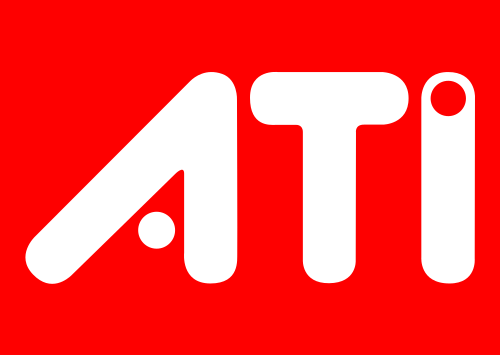
Hersteller ATI hat heute offiziell mit großen Speicherherstellern die Spezifikationen des neuen Grafikkarten-Speichers bekannt gegeben. Ein klarer Vorteil von GDDR-3 im Vergleich zu bisher eingesetzem DDR-Speicher, liegt in dem deutlich höheren Takt, der möglich ist. DDR konnte man bis maximal 400 MHz takten. GDDR-3 erlaubt Taktraten von bis zu 800 MHz (1600 MHz DDR). Mehr Informationen in der Pressemitteilung (Englisch)...
"MARKHAM, Ontario - In a collaborative effort with the world´s leading dynamic random access memory (DRAM) vendors, ATI Technologies Inc. (TSX: ATY, NASDAQ: ATYT) has announced the completion of the specification for the third generation of double data rate (DDR) DRAM for graphics, known as GDDR3.
While today´s DDR DRAM allows for speeds of up to 400MHz, GDDR3 was designed to initially provide memory clocks of 500MHz, with headroom for up to 800MHz. GDDR3 is targeted for introduction in 2003.
"GDDR3 is the DRAM that will fuel the continued trend in graphics towards life-like virtual worlds," said Rick Bergman, Senior Vice President, Marketing and General Manager, Desktop, ATI Technologies Inc. "ATI is committed to leading innovation on the PC platform, and GDDR3 will allow us to continue to raise the bar and define the industry standard for computer graphics in upcoming product generations."
Over the past four years, advancements in DDR DRAM have allowed simple graphic accelerators that rendered primitive 3D worlds to evolve into Visual Processing Units (VPUs) that render life like cinematic worlds in real time as recently demonstrated for the first time with ATI´s RADEON™ 9700 PRO and ATI´s FIREGL™ X1.
GDDR3 not only continues the trend for the graphics industry to be an early adopter of DRAM technology, but is the first DRAM designed specifically for a market before an industry standard is available.
"Our expertise in memory characterization and system implementation is enabling GDDR3 as the ideal high-speed DRAM for graphics," said Terry Lee, Executive Director of Advanced Technology and Strategic Marketing for Micron´s Computing and Consumer Group. "We believe the significant performance advantages realized by this device will rapidly drive its adoption in the graphics arena. We expect it will then migrate into a broad range of applications."
"The graphics market has always been an early adopter of new DRAM technology," said Peter Schaefer, vice president, memory products for Infineon Technologies North America Corp. "Infineon has also led the way to bringing high speed memories to market. GDDR3 complements Infineon´s development of the high speed graphics DRAMs that are used in today´s cutting edge products."
Evolution of existing DRAM
Key to creating an ideal high-speed memory for graphics was the improvement in key technical areas such as high speed signaling that is important in designing DRAM for graphics, leveraging the work of JEDEC in defining DDR-II for the commodity memory market.
"As a technology leader in high speed DRAM, Elpida congratulates ATI on rallying and leading the industry in defining the GDDR3 specification," said Jun Kitano, director of Technical Marketing at Elpida Memory (USA), Inc. "Leveraging our experience in developing and manufacturing our DDR-II device, Elpida is happy to have collaborated with ATI during the definition stages, as GDDR3 fits into Elpida´s plans to become a premier supplier of high speed memories to the graphics market in 2003."
"The graphics market is all about speed", said Farhad Tabrizi, Vice President of Worldwide Marketing at Hynix Semiconductor America. "As the leader in graphics DRAM, Hynix is committed to continue to provide high speed DRAMs to a market that values innovation in a timely manner."
Specification complete
With the completion of the specification late in the summer of 2002, DRAM vendors and users of high speed DRAMs can focus on the next step in the process of delivering products to market. GDDR3 will become available in 2003 and should continue to be an important inflection in graphics for years to come."
Im zurückliegenden Monat gab es wieder einige spannende Themen im Bereich Newsmeldungen sowie interessante Artikel und Produkttests. Folgend möchten wir...
Roboterstaubsauger- und Wischkombinationen bieten den Komfort einer automatisierten Reinigung mit dem Versprechen, Böden sauber zu halten, ohne manuellen Aufwand. Diese...
Außenüberwachungskameras spielen eine entscheidende Rolle bei der Sicherung von Häusern, der Abschreckung potenzieller Eindringlinge und der Gewährleistung von Seelenfrieden für...
Nur ein Fingertipp, und schon bewegt sich etwas, fällt, hält an oder trifft. Digitale Systeme wirken heute extrem einfach, doch...
Beim Poker treffen Wahrscheinlichkeiten auf Bauchgefühl und Mathematik auf Menschenkenntnis. Es ist daher völlig logisch, dass in der heutigen Zeit...

Mit dem ZOWIE XL2586X+ hat BenQ einen extravaganten Gaming-Monitor im Portfolio. Der 24,1 Zoll große Monitor verfügt über ein 600 Hz schnelles TN-Panel und spricht damit vor allem E-Sport-Profis an.

Mit der iCHILL Frostbite bietet INNO3D eine GeForce RTX 5090 Grafikkarte mit Wasserkühlblock von Alphacool an. Wir hatten die Gelegenheit diesen extravaganten Boliden im Testlab auf Herz und Nieren zu prüfen.